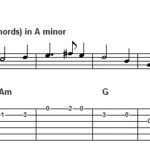The question of how to best amplify a Resophonic Guitar, often called a resonator or Dobro, might seem straightforward, but it opens up a world of tonal possibilities and stylistic choices. Unlike standard acoustic guitars, resophonic guitars rely on a cone or resonator to project sound, leading to a distinctive tone beloved in genres from bluegrass and country to blues and Americana. When it comes to amplification, the discussion often revolves around two main approaches: traditional amplifiers and direct microphone techniques.
One common method, particularly familiar to electric guitarists, involves using a traditional guitar amplifier. This approach often incorporates amp modeling and impulse responses (IRs) to further shape the tone. For instance, emulating a classic American tube amp combined with a speaker IR like a Celestion Greenback can provide a familiar and versatile sound for a resophonic guitar. Experimentation with different amp models, speaker cabinets, and microphone emulations, such as a ribbon mic, allows players to dial in a tone that suits their taste and musical context. This setup provides a comfortable transition for players accustomed to electric guitar rigs and can yield excellent results for various styles.
However, another equally valid and stylistically relevant approach is to amplify a resophonic guitar using a microphone, similar to how acoustic instruments are often amplified in genres like bluegrass and traditional country. This technique aims to capture the natural acoustic tone of the resonator, emphasizing its unique sonic characteristics without the coloration of an amplifier. Placing a microphone, such as a condenser or dynamic mic, at a distance of around 12 to 16 inches from the resonator can effectively capture its full-bodied sound for live performances or recordings. Many purists and players in acoustic-centric genres prefer this method for its transparency and authentic representation of the instrument’s inherent tone.
While digital modeling units like the Line 6 Helix offer a wide array of amp and cabinet simulations, achieving the nuanced sound of a distant microphone placement can be challenging. The limitations of cabinet-centric microphone modeling in some units can restrict the ability to emulate the open and airy sound captured by a microphone positioned further away from the instrument. For players seeking a purely acoustic resophonic tone, particularly for bluegrass or traditional country styles, bypassing amp simulations and focusing on direct microphone techniques might be more effective in capturing the desired sonic authenticity.
Ultimately, the “best” method for amplifying a resophonic guitar is subjective and depends heavily on the player’s musical style and tonal preferences. Whether opting for the familiar warmth and versatility of an amplifier or the natural transparency of a microphone, both approaches offer distinct advantages and contribute to the rich and diverse soundscape of resophonic guitar music. Experimentation and exploration of both methods are encouraged to discover the optimal amplification setup for individual playing styles and musical contexts.

